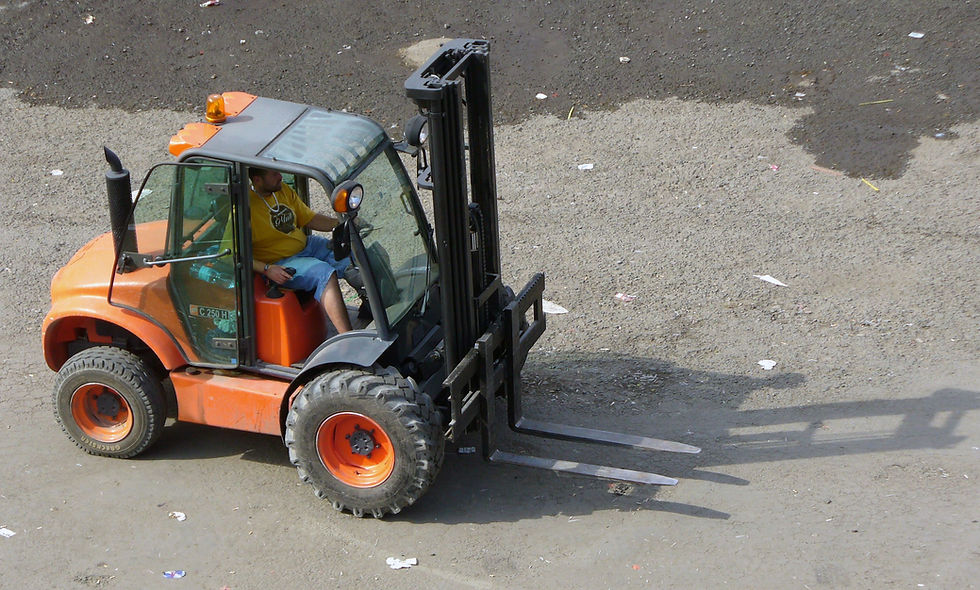
During a forklift operation, all stakeholders should ensure compliance to the following:
• Wherever reasonably practicable, the forklift driver should wear the appropriate PPE (safety helmet, safety shoes and reflective vest) during the forklift operation.
• Safety belt should be buckled during forklift operation if the safety belt is installed in the forklift by the manufacturers.
• No part of the driver’s body should extend beyond the sides of the forklift during operation.
• Passengers are not allowed when the forklift is in operation.
• The weight of the materials should be confirmed before lifting. The vehicle’s rated capacity must not be exceeded.
• All loads should be handled in accordance with the height and weight restrictions on the forklift’s load chart.
• Slings, cables or chains should not be attached onto the forks to lift materials or objects, unless specified by forklift manufacturers
• Never add extra load to the counterweight.
• Ensure that there is adequate clearance before passing under or between structures.
• Do not travel under any suspended loads.
• The operator should always look in the direction of travel and should not move the forklift until he is certain that there is no obstruction or people in the path of travel. Always give way to pedestrians. Rear spotlight. Revolving light. Reverse light. Forward spotlight and signal light. Tyre. Rear view mirror. 20
• The forklift operator’s view should not be obstructed while driving (e.g., materials stacked above his front view).
• In situations where a clear view of the path is impeded, the forklift driver would need to be guided when driving the forklift. The forklift operator should always look over his/her shoulder to check for blind spots when reversing.
• If the movement of a load or any part of the forklift creates a danger to workers, the employer should ensure that workers never remain within the range of the moving load. Workers or pedestrians should only be moving in the demarcated walking zone.
• When forklifts are in motion, loads should be carried as close to the ground or floor as the situation safely permits.
• Loads that may tip or fall and endanger a worker should be secured properly.
• Forklifts should not be used to support, raise, lower or transport humans.
• Forklifts should not be used to tow or push other vehicles or equipment.
• Maintain adequate clearance from overhead structures such as power lines, beams, and so on.
• Slow down on wet or slippery areas.
• Slow down and sound the horn when approaching junctions, building entrances, exits and blind corners.
• Stunt driving and horseplay are prohibited.
• If a forklift driver believes that the load being moved is unsafe, he should stop the operation immediately and report accordingly.
• When a forklift is required to enter or exit a vehicle to load or unload, the vehicle should be immobilised and secured against accidental movement.
• The forklift driver is responsible for the safety of other workers in the vicinity of the operating zone.
• Workers in the vicinity of a forklift should be aware of the forklift’s path of travel and avoid contact with the forklift at all times.
• When a forklift is parked in position, the forks should be in the lowered position or be firmly supported.
• When a forklift is left unattended, turn off the forklift’s engine, place all the controls in the neutral position, and set the brakes to prevent any accidental movement.
• The height of the forks should not be adjusted while the forklift is still in motion. The forks’ position should only be adjusted when the forklift comes to a complete stop.
• Forklifts should not be used to hoist any goods unless equipped with approved attachments from the manufacturer.
Visit Our Website www.redforklifts.com.sg
